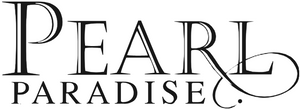Press - National Jeweler, Sept 2007

Pearl Paradise takes akoyas from Chinese seas to market
By Joseph Dobrian
September 01, 2007
A 16-inch strand of 7- to 7.5-millimeter akoya pearls from Pearlparadise.com sells for $585.
Xuwen, China—Pearlparadise.com, a fast-growing, U.S.-based online pearl retailer and supplier, has taken the next step in its evolution: It’s opening a farm in China.
Jeremy Shepherd, the company president who claims he is the first Westerner to own a Chinese akoya pearl farm, is currently cultivating some three million oyster shells in the pearl-rich province of Xuwen, Guangdong. He hopes to harvest between 1 million and 1.25 million salable pearls by late 2008.
“My Chinese partner, You Hongqin, is an experienced pearl farmer who lacked the wherewithal to sell his product in great volume,” Shepherd says. “I made this investment so I can control the farming of these pearls.”
Part of that investment involves time. Shepherd’s oysters will remain in the water for 16 to 20 months—longer than many rival farmers, who fear they’ll lose money based on shell attrition—he says. Shepherd says he can afford to take the risk and expects to boost profits and set a new standard for akoyas by producing higher-quality pearls with nacre thicknesses above one millimeter, surpassing the average nacre layer for Chinese akoyas, which has declined to 0.25 millimeters to 0.35 millimeters.
 Pearlparadise.com President Jeremy Shepherd, left, with You Hongqin, director of Xuwen Pearl Paradise.
Pearlparadise.com President Jeremy Shepherd, left, with You Hongqin, director of Xuwen Pearl Paradise.With $20 million in annual sales, virtually all of which comes through online sales, Pearlparadise.com claims to sell a pearl necklace every two minutes, on average. It
sells both to consumers and to other online retailers.
Pearlparadise.com started as what Shepherd calls “a fluke” in 1996. He was working as a flight attendant, and during a layover in Beijing, bought a string of Chinese pearls for his girlfriend for about $25. A U.S. jeweler later appraised the set at $600.
“Then a friend told me he was selling odds and ends on this new Web site called eBay,” Shepherd says. “I couldn’t figure out how to work eBay, but at that time, Amazon.com had an even better auction platform, so I used it, taking just $4,000 to China and buying similar strings of pearls for $20 and selling them for $60.”
After three years of selling pearls on Amazon and eBay, working the auctions in his off-hours, Shepherd’s brother helped him build his own Web site. By the end of 2000, the site had gone from a couple of pearl jewelry sales a week to 20 or 25 a day, he says.
Now, the company has 45 employees, including gemology graduates of the Gemological Institute of America, who develop new lines of pearl jewelry featuring akoya, Tahitian, South Sea, natural and colored freshwater pearls in a variety of designs. Shepherd buys no finished jewelry: His company does its own matching, drilling and stringing, and his akoya pearl grades range from Hanadama to AAA and AA+, with no single-A-grade pearls sold. Only grade A Tahitian lots are used, and the retail price for a clean strand of 9- to 10-millimeter Tahitians is about $3,000.
Already fluent in English, Spanish, French, Japanese and a Malayo-Polynesian language called Chuukese, Shepherd also learned Mandarin to set up his new farm. As a foreigner, knowing the language helps.
“Business negotiations in China can be quite fierce,” Shepherd says.





